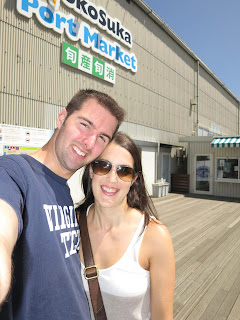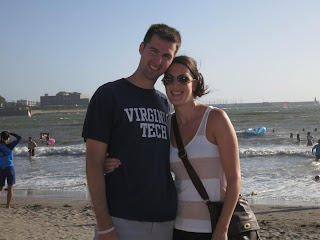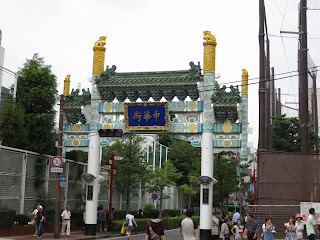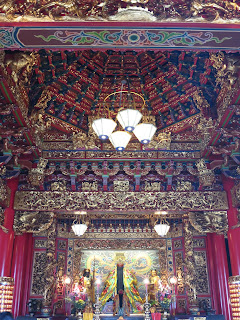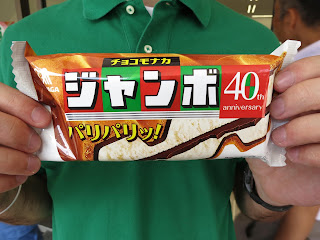After a grueling 5 minutes of driving 20 kph (~12mph) on a street with no cars, they told us we are fit to drive in Japan and gave us our drivers license! Immediately afterwards, we bought a car. It is incredibly easy to find cheap used cars here (cheap U.S. standards). Apparently, the taxes that the Japanese have to pay on cars 5 years old is pretty steep and then it jumps even more when the car is 10 years old. So, the Japanese will "junk" their "old" cars and sell them for insanely cheap to someone who turns around and sells them to the Americans for "cheap" and makes loads of money. The process of transferring the registration is ALMOST as annoying as the DMV, but without the hours and hours of waiting time because you can pay someone to do the dirty work for you. Once all the paperwork is together and you have the insurance, etc., you find someone in the yellow pages who will take it all up to Yokohama and obtain your license plates and the official registration. Best money spent ever. But first, you have to obtain all the paperwork needed. The most tedious one to obtain is your parking certificate. You have to go to the local koban (police station), with your address, make/model of car and then they measure your car. They give you a date to return on. During the wait time, they literally drive out to your house and measure to make sure your car fits in the spot you say you are going to park it in. Then you go back to the station to pick up your certificate (or get the denied stamp, if they don't think the car is appropriate size).
Here is our first car. It is going to be primarily my car because it is just so darn cute, and Kenny is going to buy one from a friend of his when he leaves later this month to return to the States.
 |
Today, we went driving off base for the first time. I think my heart was pounding the entire time. Not only do you have to remember to drive on the wrong side of the road, but the signage on the roads is mostly in Kanji (if there even are road names). We researched where we were going intensely before we left and we had no problems whatsoever. We navigated parking structures, parking lots, ticket booths, etc.
Yokosuka Port Market is a local fish/fresh produce market similar to a local farm market in the States. Lots of live fish in tanks, including sharks, snails and sea urchins. There was also a lot of fresh produce, a bakery with savory/sweet baked goods and a gelato stand (they make the gelato on site every day). Good eats, and I'm excited to do some shopping there once we move into our house.
 |
| Lots of fresh produce |
 |
| Yes, that sign means live shark for sale. We were tempted. |
 |
| A lot of live fish for sale. |
 |
| Yummy gelato stand |
After shopping, we headed down to our new place of residence - Zushi! Just a quick trip to check the place out and take a look at the beach. It is beautiful and we are so lucky to have it within walking distance of our house. Crazy busy during the summer, it appears to have a slightly similar vibe to South Beach during spring break. Beer/mojito/summer drink stands down the entire length of the beach with lots of drunk Japanese along with many Japanese families (who might have also been drunk, haha). Huge waves today, lots of windsurfers out past the breakers. The water was nice and warm and felt great on my feet on this 95F day! The sand however, does leave a lot to be desired. Bit of a dirty type of sand - similar to Myrtle Beach, but more hard/packed down. I'm kind of a sand snob - and still say that it is tough to beat Grand Haven, MI sand! :)
Dinner in Zushi was a bit of a challenge tonight. We haven't had too much a of problem with the language barrier - most restaurants have English menus or pictures you can just point out what you want. But tonight we ended up at a place without English menus, menu pictures or English speaking staff. We could have chickened out and gone elsewhere, but we managed (with some help from a translate app on my phone) to order what we wanted (for the most part). We ended up eating some of the best tuna and salmon sashimi I have ever had, and Kenny ordered crab. What he received was a deep fried entire crab. They told us (interpreted with charades) to eat the entire thing, and I'm pretty sure the shell was still on, but it was quite tasty and Kenny is still alive, so I think it was okay. :)

It is difficult to be a in country with such a drastically difference language, but it is motivation for me to keep doing my Japanese lessons and classes and keep practicing, even if they have no idea what I'm trying to ask or say. One problem is, I know how to ask what something is in Japanese - but then have no clue how to interpret the answer, haha! :)
I will end this post with some more vending machine discoveries - one delicious and one I haven't gotten up enough courage to try yet! :) We are going to Tokyo for the next 2 days, I'm sure a post will follow soon after!
 |
| Cold corn soup - haven't tried this yet. I think they serve it warm from the vending machine in the winter - maybe I will try it then. |
 |
| Green tea ice cream in a crunchy waffle - yummy. |

